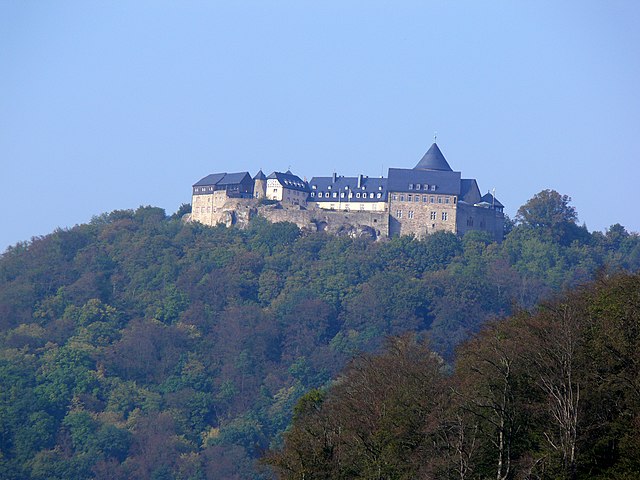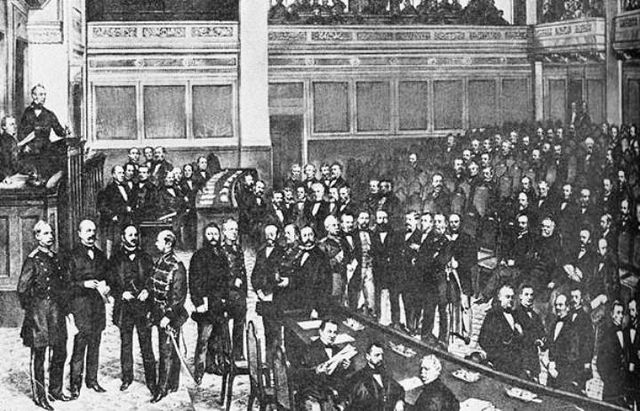Principality of Waldeck and Pyrmont
The County of Waldeck was a state of the Holy Roman Empire and its successors from the late 12th century until 1929. In 1349 the county gained Imperial immediacy and in 1712 was raised to the rank of principality. After the dissolution of the Holy Roman Empire in 1806 it was a constituent state of its successors: the Confederation of the Rhine, the German Confederation, the North German Confederation, and the German Empire. After the abolition of the monarchy in 1918, the renamed Free State of Waldeck-Pyrmont became a component of the Weimar Republic until divided between Hannover and other Prussian provinces in 1929. It comprised territories in present-day Hesse and Lower Saxony (Germany).
Government bond of the Principality Waldeck and Pyrmont, issued 1 January 1863
Fundamental law of the Principality of Waldeck and Pyrmont, 23 May 1849 (excerpts)
Castle Waldeck, Hesse
Arolsen Castle
North German Confederation
The North German Confederation was initially a German military alliance established in August 1866 under the leadership of the Kingdom of Prussia, which was transformed in the subsequent year into a confederated state that existed from July 1867 to December 1870. A milestone of the German Unification, it was the earliest continual legal predecessor of the modern German nation-state known today as the Federal Republic of Germany.
First session of the konstituierender Reichstag on 24 February 1867. This organ was actually not a parliament as there was no federal state then. Its sole purpose was to discuss and accept the draft constitution. Later, in August, the North Germans elected the first Reichstag as established by the new constitution.





